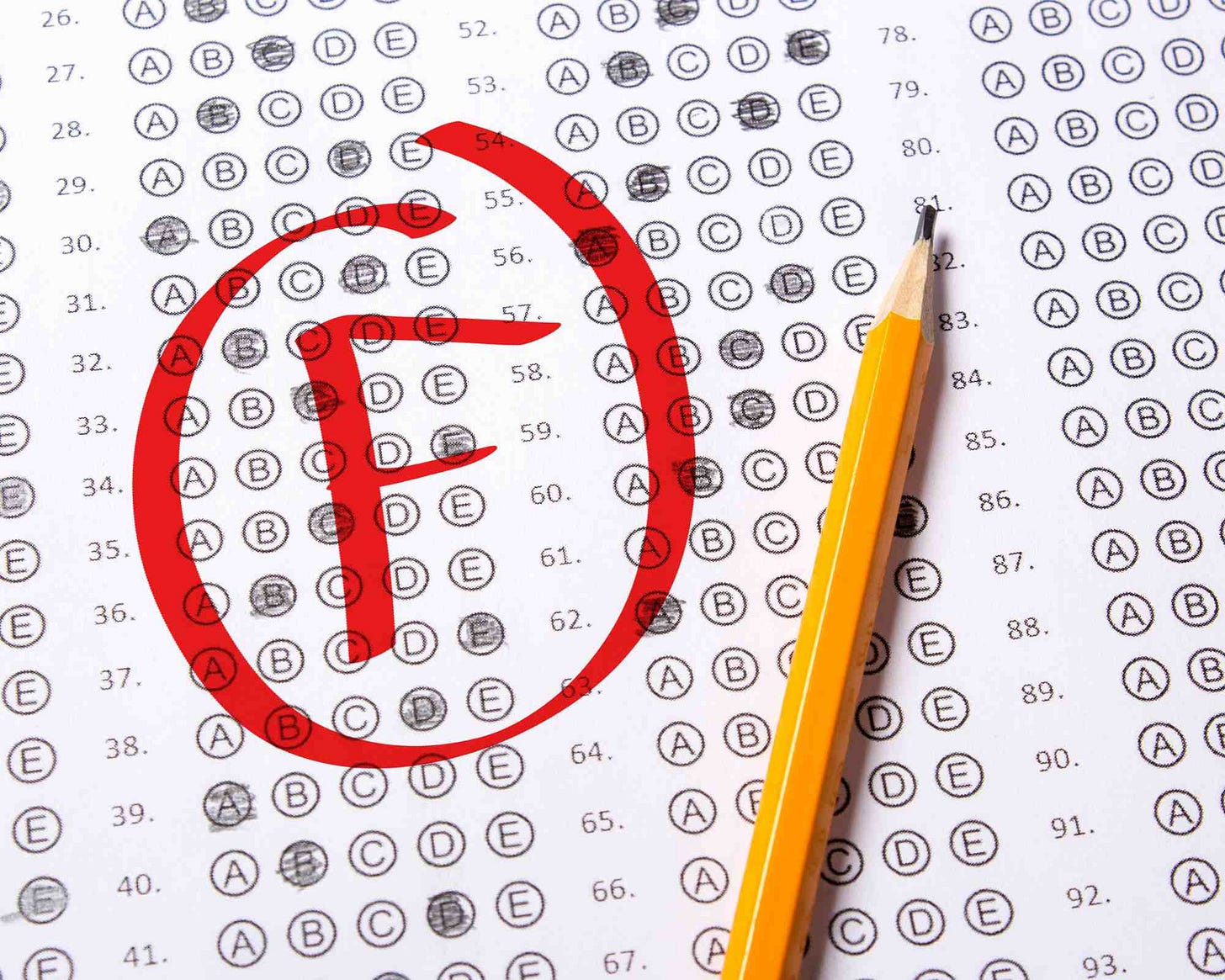Dear Teachers,
✋🏻Raise your hand if you feel like any of the school reform efforts you’ve seen over the past two decades – No Child Left Behind (Bush), Race to the Top (Obama), School Choice (Trump) – has made a substantive and lasting positive difference for you or your students?
Ok. Hands down. Wait - there weren’t any raised (And - PLEASE reach out if I missed your raised hand! I want to learn!).
✋🏻Raise your hand if you feel like you’ll explode if your administrators introduce one.more.thing?
Ok. Hands down.
✋🏻Raise your hand if you have seen a specific curriculum, tech, set of standards, or other school-wide design innovation make a substantive and lasting positive difference for you or your students?
Mixed. There are some good ones out there. I love elements of EL (formerly Expeditionary Learning) and many things about PBL (Project Based Learning). Obviously, the awesomeness of these models is heavily reliant on fidelity — using them as designed. And, even more important: rad teachers. Which you are.
✋🏽Keep your hand raised if your school is still using that innovation.
If I’m reading the room correctly, most of your hands went down. Save a few charters that are grounded in a specific curriculum (i.e., EL, PBL, etc).
Sigh.
Anyhow, I’ve been thinking about you all. As I do. About a school system serving so few learners. And so unhealthy for everyone in it. About joyless schools.
Tl;dr (Too long; didn’t read — for those short on time)
School reform efforts over the past 2 decades have failed.
Thought leaders are pushing for ‘dismantling the system’ and creating something new, good, and equitable. Agreed.
AND - even as we create a new amazing system (here for it!), we need immediate solutions (might I suggest: nature-based learning*?) to help the 50+ Million educators and students aboard U.S. S.S. Public Education RIGHT NOW.
Bonus: nature-based learning is a durable strategy that can help now — and next. No matter where we end up (more on that in a subsequent post). Just wanted to plant that seed. 🌱
*Nature-based learning is learning outdoors or bringing elements of nature indoors for learning.

School System Reform: 2 Decades of Failure
Every U.S. school reform strategy since No Child Left Behind has failed.
This ☝🏻 conclusion is paraphrased from Diane Ravitch in her Time Magazine piece, The Education Reform Movement Has Failed America.
(🍎 Teachers, please excuse me as I take a moment to pull together unpleasant aspects many of you live daily. It’s just in case non-teachers are reading this.)
Ravitch explains:
The education reform movement that started with George W. Bush’s No Child Left Behind law is dead. It died because every strategy it imposed on the nation’s schools has failed. From Bush’s No Child Left Behind to Obama’s Race to the Top to Bill Gates’ Common Core State Standards to Trump’s push for school choice, the reformers have come up empty-handed.
Lest any of my readers feels like this is getting political, let me be clear: the past two decades of education reform have been BIPARTISAN.
Anyhow, let’s take a closer look since we have the data thanks to the very tests funded by these reform efforts.
Academic Performance: Battleship Sunk
We’ll start with academics, since so-called “academic performance” is chief among variables about which education reformers concern(ed) themselves. However you feel about standardized tests (ironically tools of the ed reform movement; lots of feels here) – the aggregate data tells a troubling story.
The National Assessment of Educational Progress (NAEP) administers tests to 4th, 8th, and 12th grade students. Then, the National Center for Educational Statistics compiles them in a report (aka the ‘Nation’s Report Card’). Here are some abysmal outcomes sampled from the The Condition of Education 2023 At-A-Glance:
🔥Reading: Across ages (tested at 4th, 8th, and 12th grade), only about 1/3 of students scored at or above proficient. That means 2 OUT OF 3 STUDENTS ARE NOT READING PROFICIENTLY!
🔥Math: Across age groups, only about 1/3 of students scored at or above proficient. By 12th grade, this actually drops, with only 1 in 4 students at or above proficient. That means by graduation 3 OUT OF 4 STUDENTS ARE NOT PROFICIENT IN MATH!
🔥Science: Again, across age groups, only about 1/3 of students scored at or above proficient. By 12th grade, about 1 in 5 students is proficient. That means by graduation 4 OUT OF 5 STUDENTS ARE NOT PROFICIENT IN SCIENCE!
Yikes.
Student Joy: Carrier Down
🔥🧠 In October 2021: the American Academy of Pediatrics, American Academy of Child and Adolescent Psychiatry and Children’s Hospital Association issued a Declaration of a National Emergency in Child and Adolescent Mental Health.
🔥🧠 Seven of 10 public schools report the number of students seeking mental health services has increased since 2020.
🔥🧠 By 2021, more than a third (37%) of high schoolers were reporting poor mental health and 44% were dealing with persistent feelings of sadness and hopelessness.
🔥🧠 Suicide is one of the leading causes of death for youths ages 15 to 19 globally.
🔥🧠 In the US, nationwide, suicide is the second-leading cause of death for young people age 10 to 24. (In Colorado, where I’m from, it’s No. 1.)
Since there are no standardized tests for student joy, I’ll baby-bootstrap this inference even though none of my astute readers needs me to spell this out: VERY FEW STUDENTS ARE FEELING JOYFUL. (Read more deets here)
Teacher Joy: Submarine Down
I’ve written a little bit (not enough) about TEACHER JOY. Or its absence. A wilier statistic, no doubt. You have to triangulate this one a bit since we don’t collect standardized data on joy (how cool would that be!?) or really much data on teacher wellbeing in general.
I’ll offer a recent least-fave statistic that seems a good proxy for teacher joy. According to a July 2023 McKinsey report, “K–12 teachers are quitting. What would make them stay?”:
🔥Nearly 1/3 of teachers in the U.S. are considering leaving the profession.
Teachers who are thinking of leaving cite compensation, unreasonable expectations, and an inability to protect their well-being as top motivators.
Unsurprisingly, these specific groups of teachers are more likely planning to leave:
🔥teachers in low-income districts (38%),
🔥younger teachers (40%),
🔥teachers in schools with higher populations of students-of-color (38%)
Rearranging Deck Chairs
When I think of early 21st Century “education reform” initiatives, the “rearranging deck chairs on the Titanic” adage comes to mind.
Except I think the situation is actually worse. Ed reformers of the past 2 decades (who Ravitch calls ‘disruptors’) continue to sling strategies that appear more futile and more inappropriate — especially in the wake of demonstrable failure — than the deck-chair project.
Again, from Ravitch:
The “reformers” relied on the business idea that disruption is a positive good. I call them “disruptors,” not reformers. Reformers have historically called for more funding, better trained teachers, desegregation, smaller class sizes. The disruptors, however, banked on a strategy of testing, competition, and punishment, which turned out to be ineffective and harmful.
Ed Disruptors vs. Education Thought Leaders
So, in summary: education reform over the last two decades:
Recognizing this – and seeing little salvageable in the current system – some education thought leaders proffer a whole new system. This line of thinking often leads to a two-step solution:
‘burn it all down’
Imagine a new public education system that is just, healing, and healthy for the humans in the system. And in which students learn — about other humans, about more-than-human nature, about the world. About themselves.
I am here.for.it!
It’s hard not to get fired up reading our “Nation’s Report Card.” And learning about (or living) the things that would surface during the “Nation’s Parent-Teacher-Conference” (which doesn’t exist but should) like mental and physical wellbeing or joy.
🔥🔥🔥🔥🔥🔥🔥🔥🔥🔥
Education thought leaders care deeply about real students and real educators. Why else would they dedicate their life’s work to the cause? The problems of public education are vexing.
While I appreciate and tend to agree with what many education thought leaders are saying regarding the need for something very different than what we have, so far I see a great deal of hand waving about future chairs on a yet-to-be-designed-or-even-envisioned vessel (will it even have a deck or chairs?!).
We’ve all heard adages about scrappy start-ups that are “building the ship while they sail it” or “flying the plane while they build it.” That’s all well-and-good for a new tech start-up or even a new school.
Applied to the public education imagining (or reimagining) project, those adages alone are dangerous. Because the hand waving is happening as 50+ Million educators and students are drowning aboard the U.S.S.S. Public Ed right now.
Locus of control
Back to teachers. I always find myself coming back to you. To your potential as individuals woven together for revolutionary grassroots mycelial change.
Dear teachers,
✋🏽Raise your hand if you would like to hear about something you can do – starting tomorrow – behind closed doors (or, better, out-the-door!) to bring more joy into your teaching practice? To your students? To you?
✋🏻Raise your hand if you would be interested in incorporating practices into your instruction that are healing and healthy for you and your students?
✋🏿…practices that lead to improved social emotional skills, better relationships among students and between educators and students?
✋🏻…improved academic achievement?
Lots of hands. Some raised eyebrows, too.
Good. I can handle some skeptics.
Join me next week to learn about the nature-based learning life jackets we all need now and next.
❤️B





